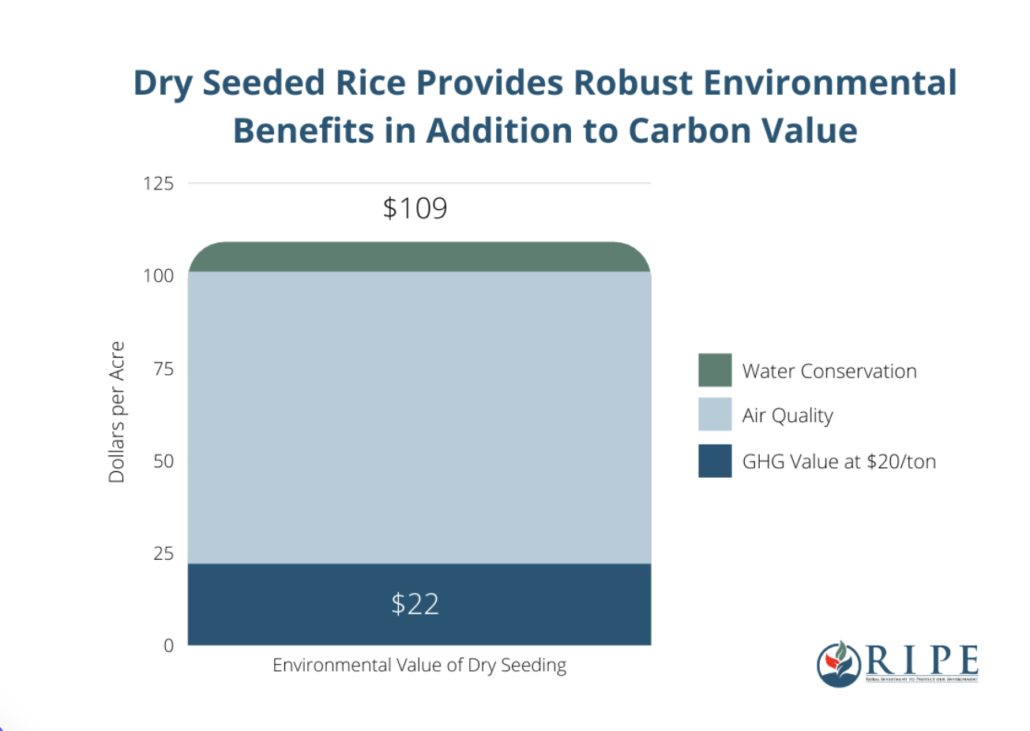A Closer Look at the RIPE Proposal’s Qualifying Practices: Dry-Seeded Rice
Our robust list of qualifying conservation practices deliver public benefits — including soil health, clean water, water conservation, wildlife conservation and climate mitigation — valued at more than $100 per acre or animal unit. Dry seeding for rice grown in California or regions south of 1-10 is one approved practice. This protocol has been accepted by California’s offset program, which is one of the strictest programs in the world.
Farmers who adopt dry seeding provide significant climate benefits. The practice reduces greenhouse gas emissions by 1 metric ton per acre, but even that significant benefit is only around $22 per acre. However, the practice also delivers nearly $80 in air quality benefits and $8 in water conservation per acre, reaching a total of $109 per acre.
Review our methodology and sources for this practice, which compiles research from USDA, land-grant universities and peer reviewed studies, in the chart here. Access our current list of proposed qualifying practices here.

